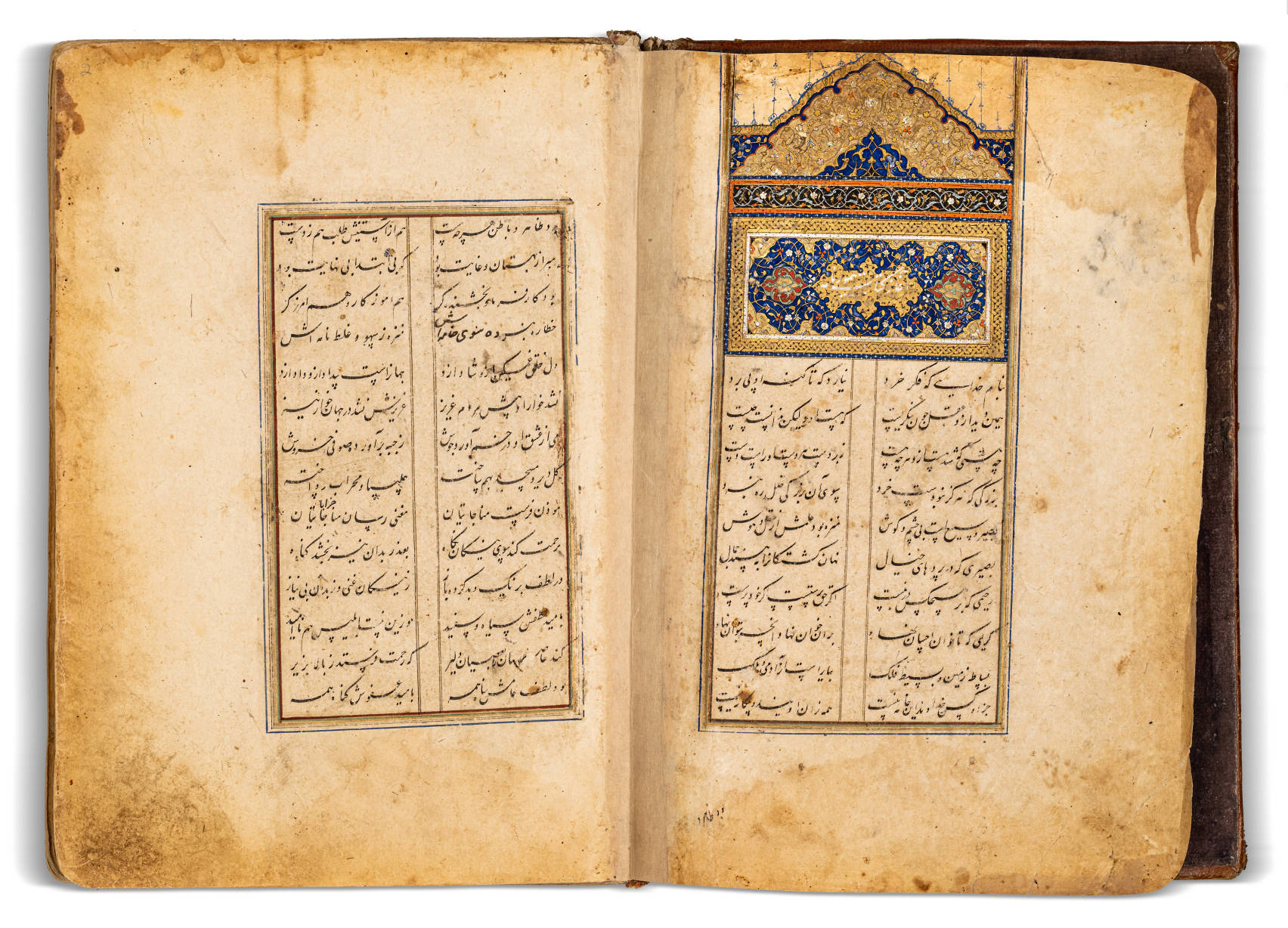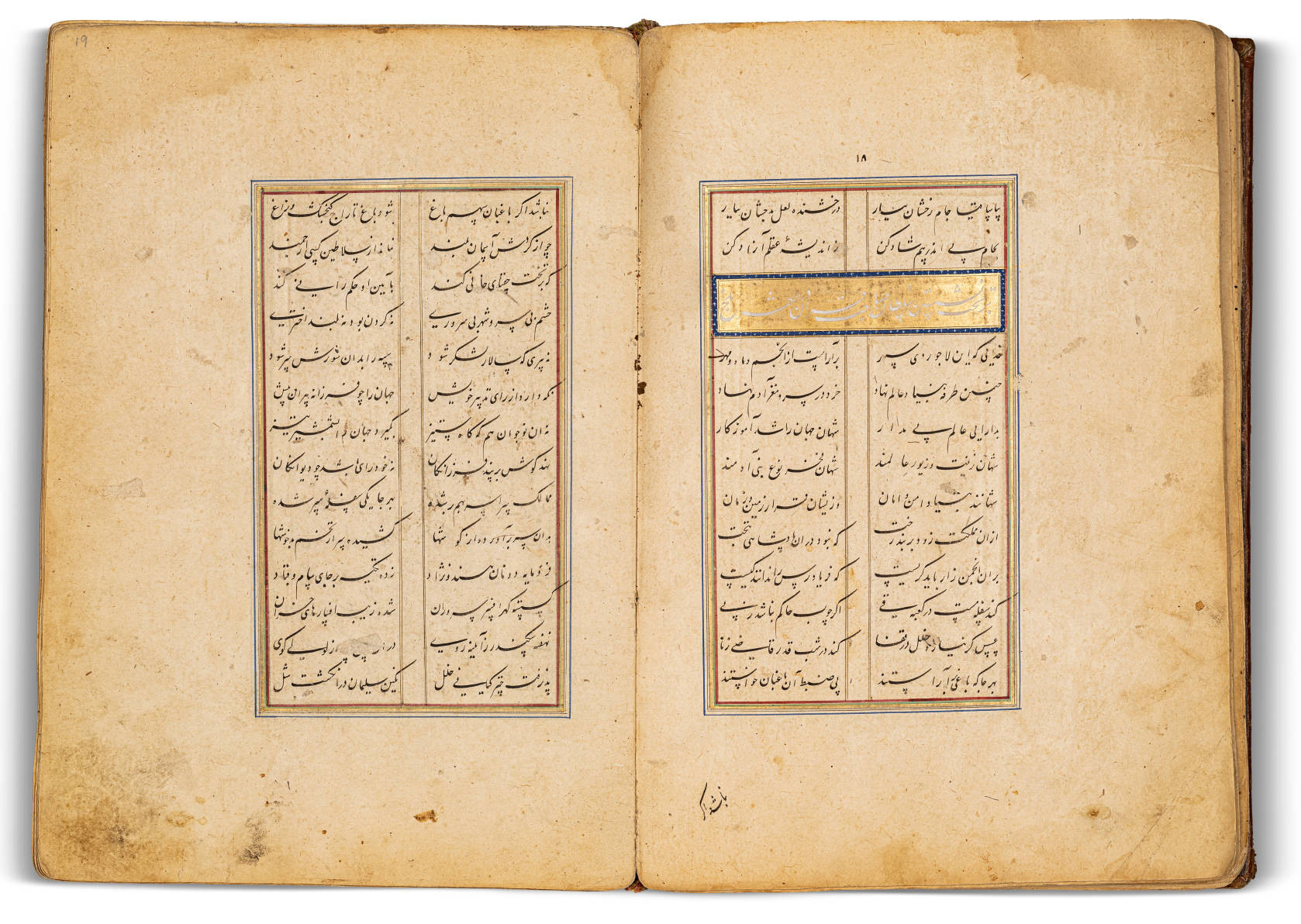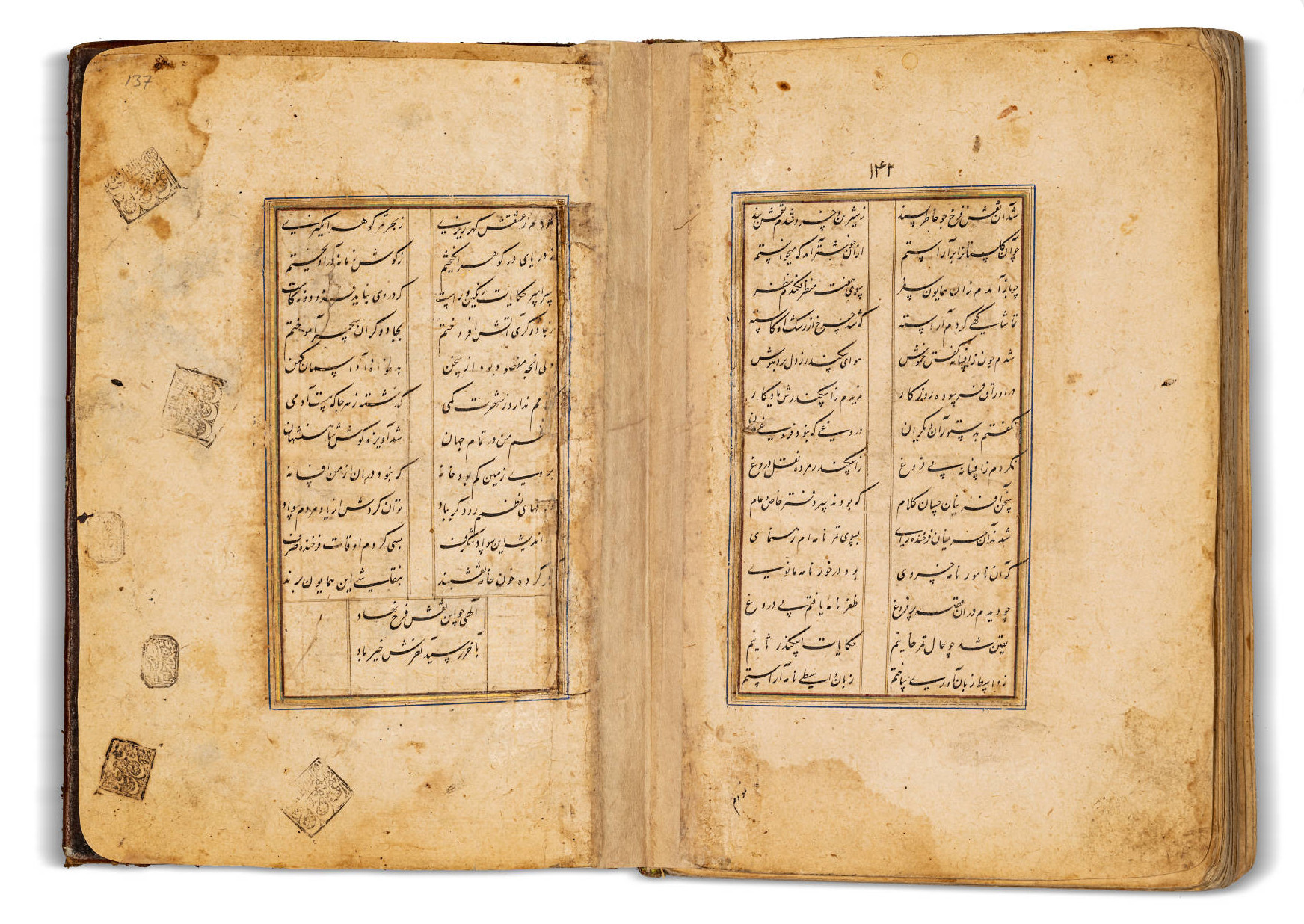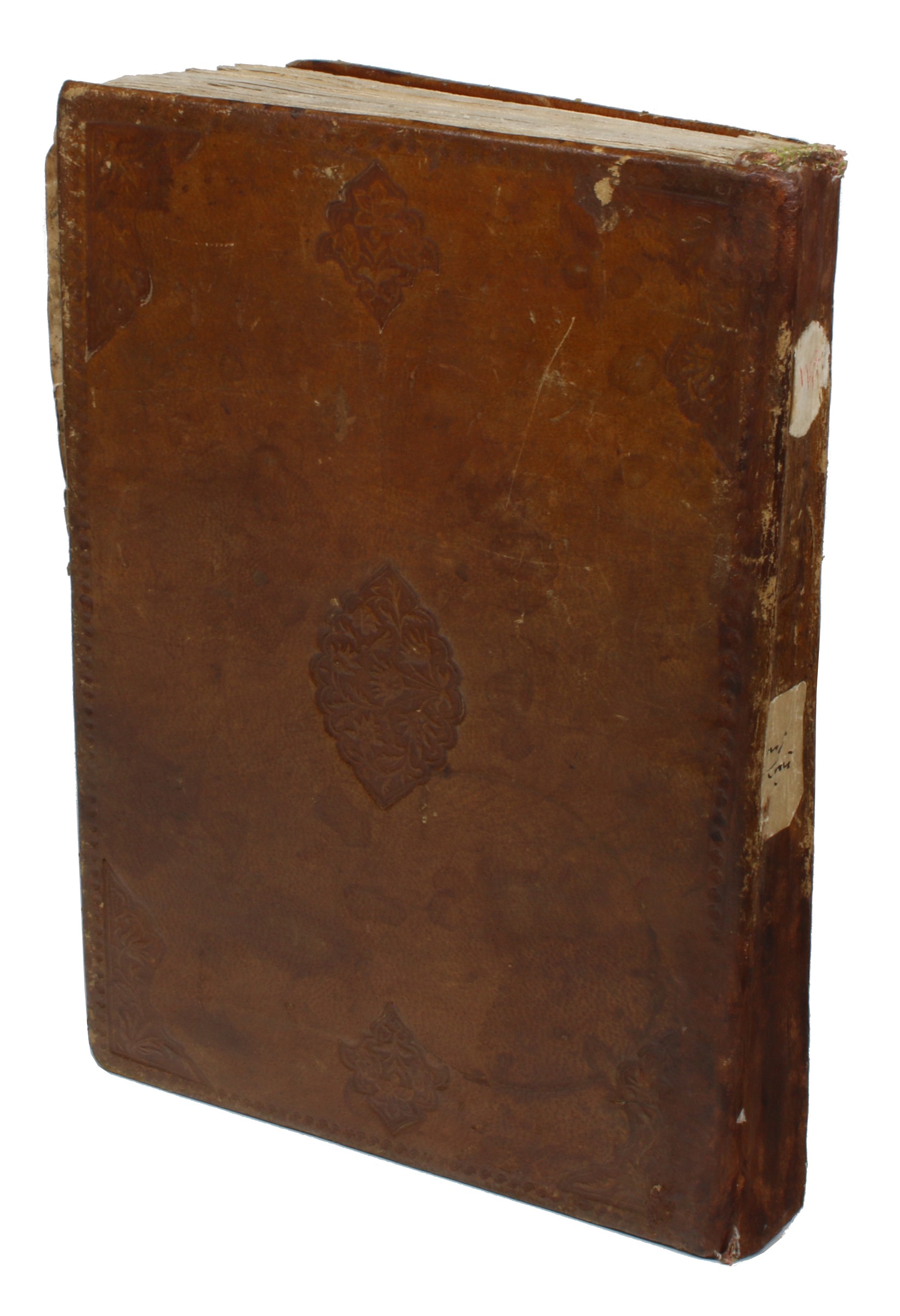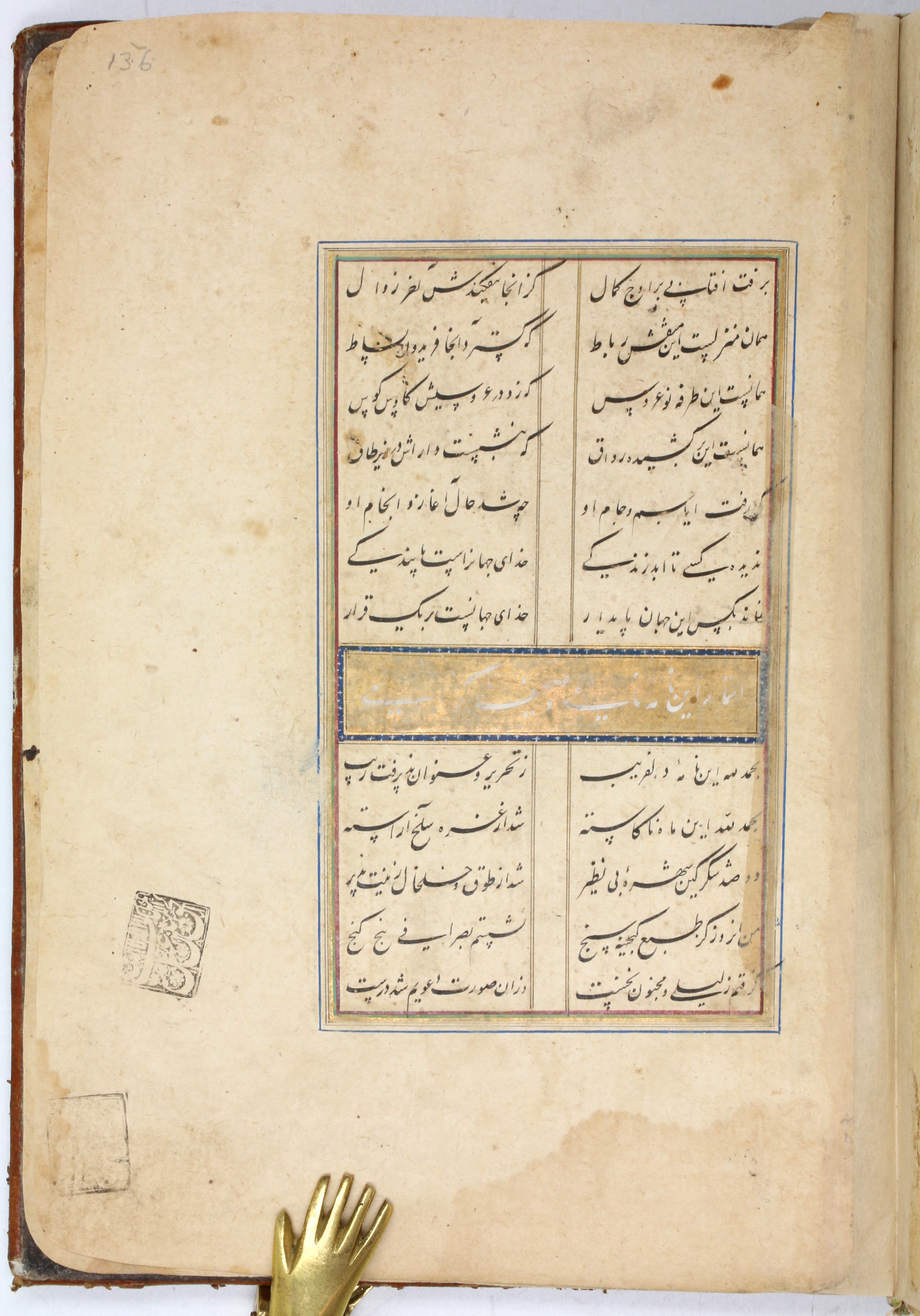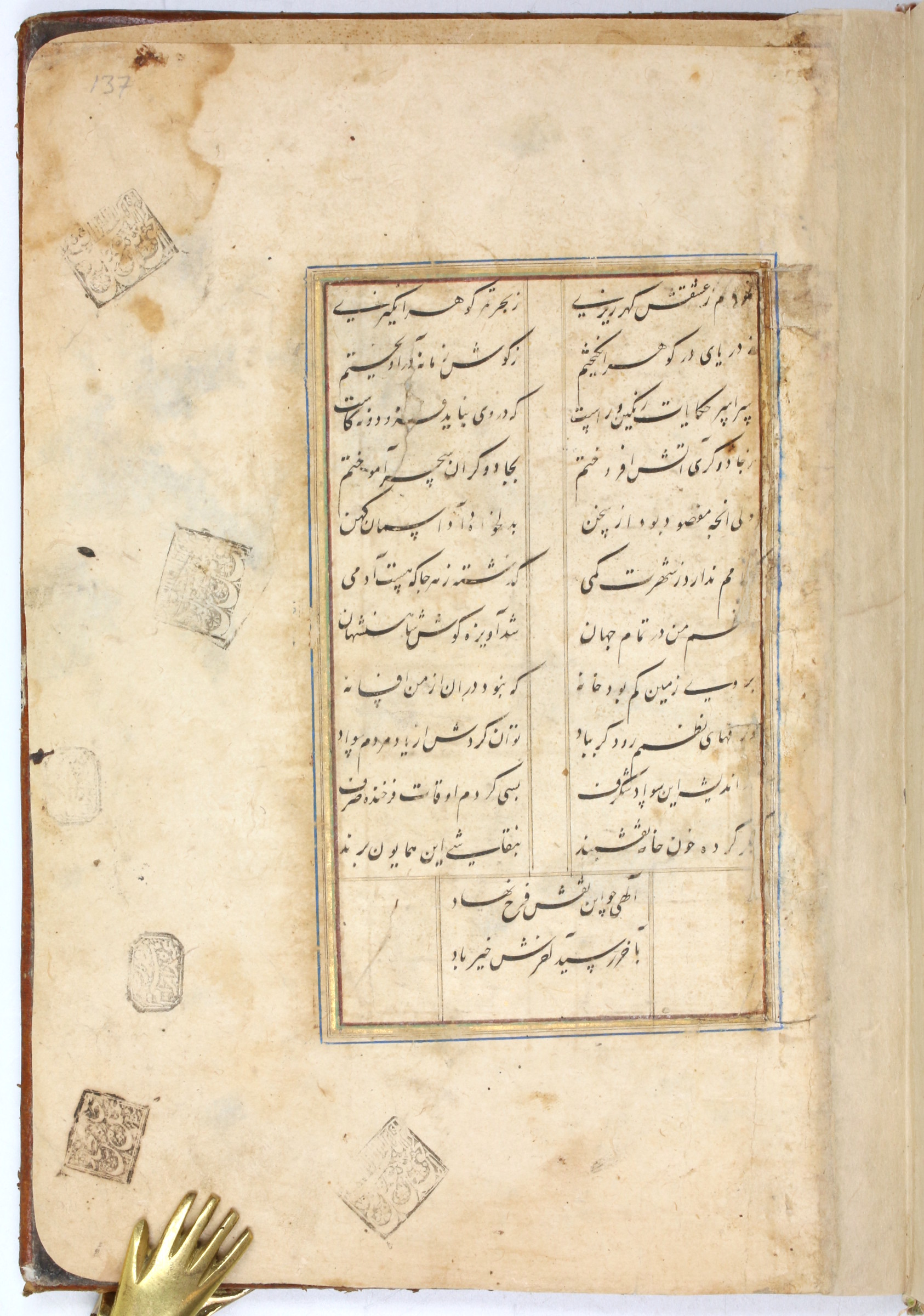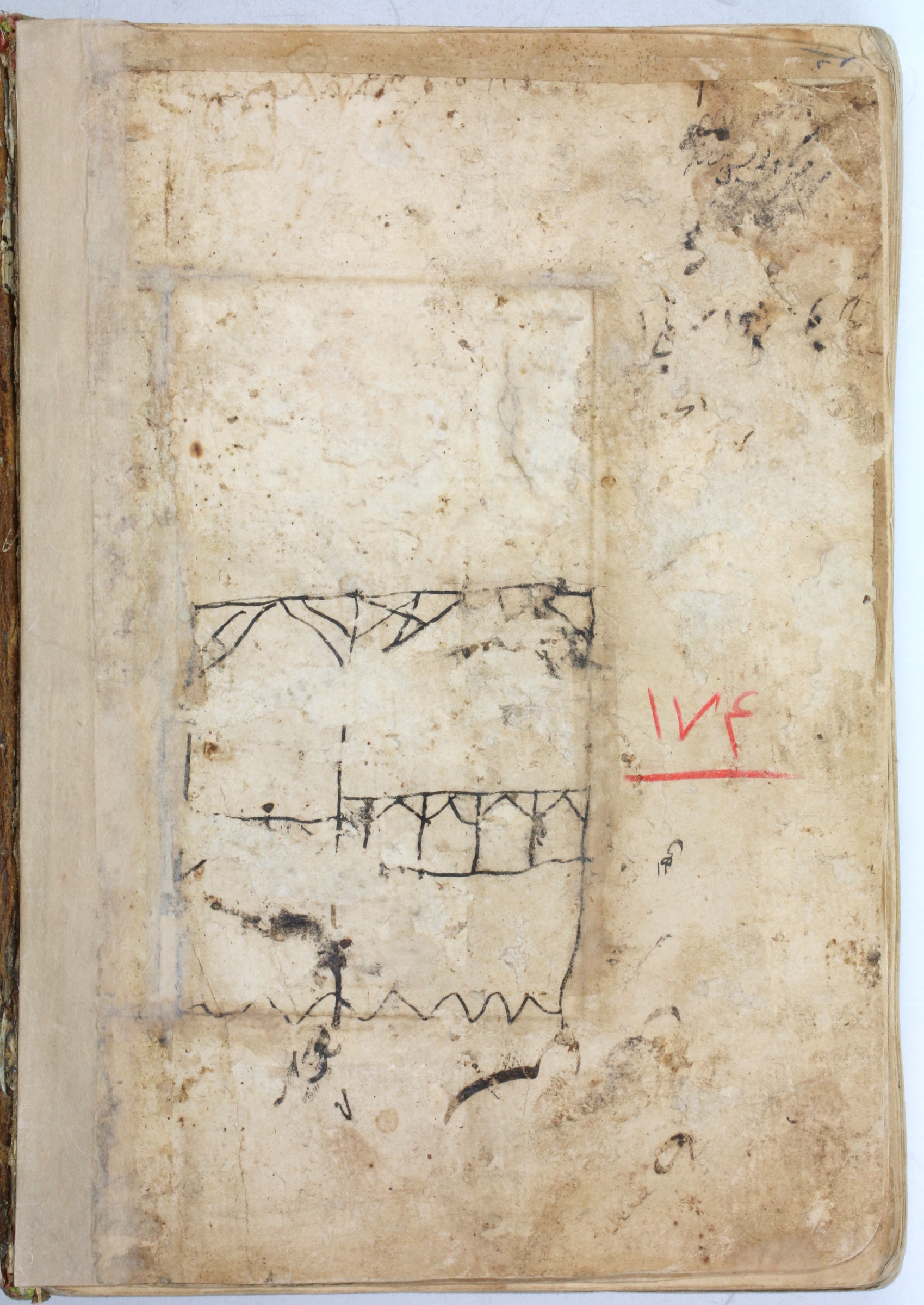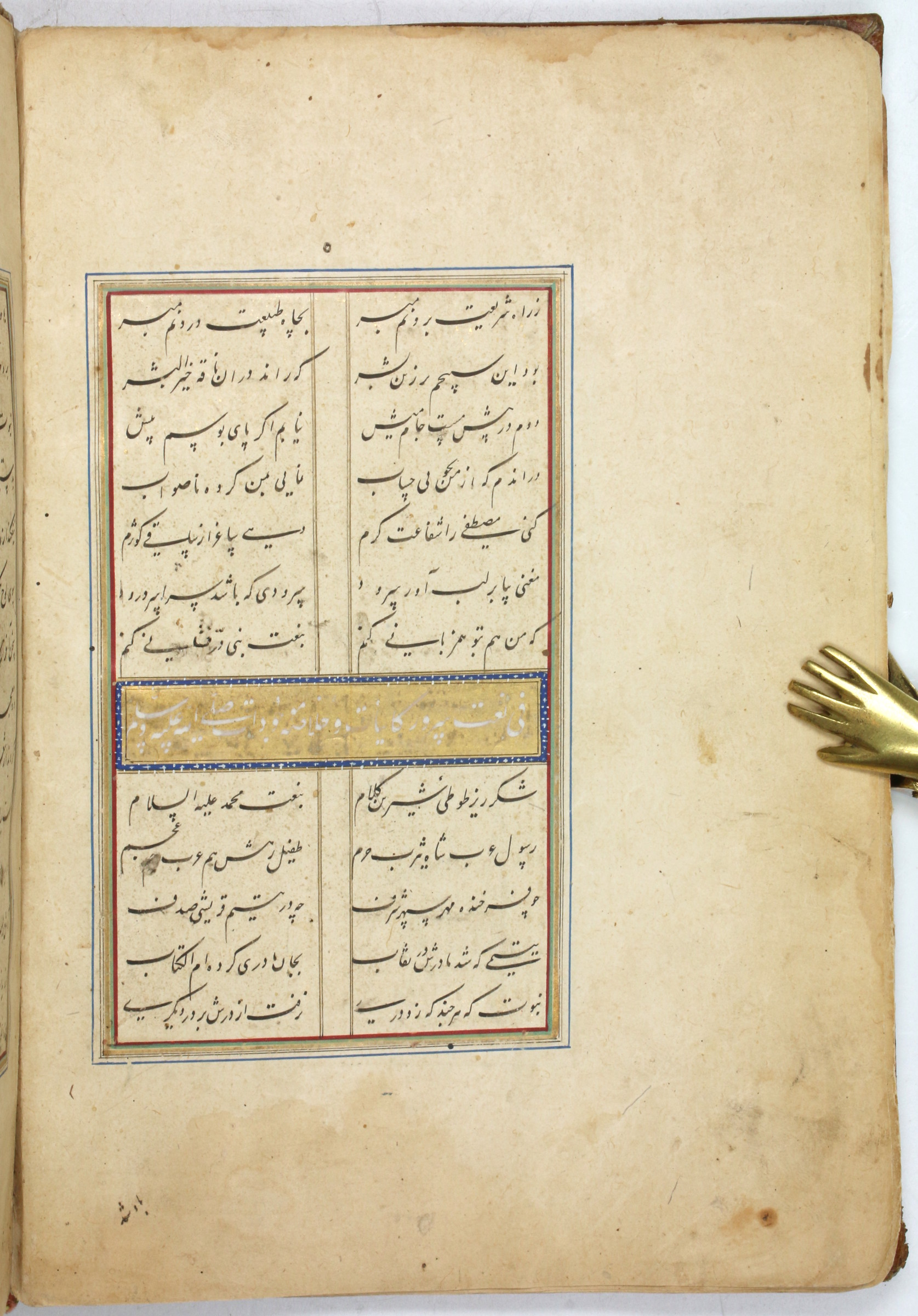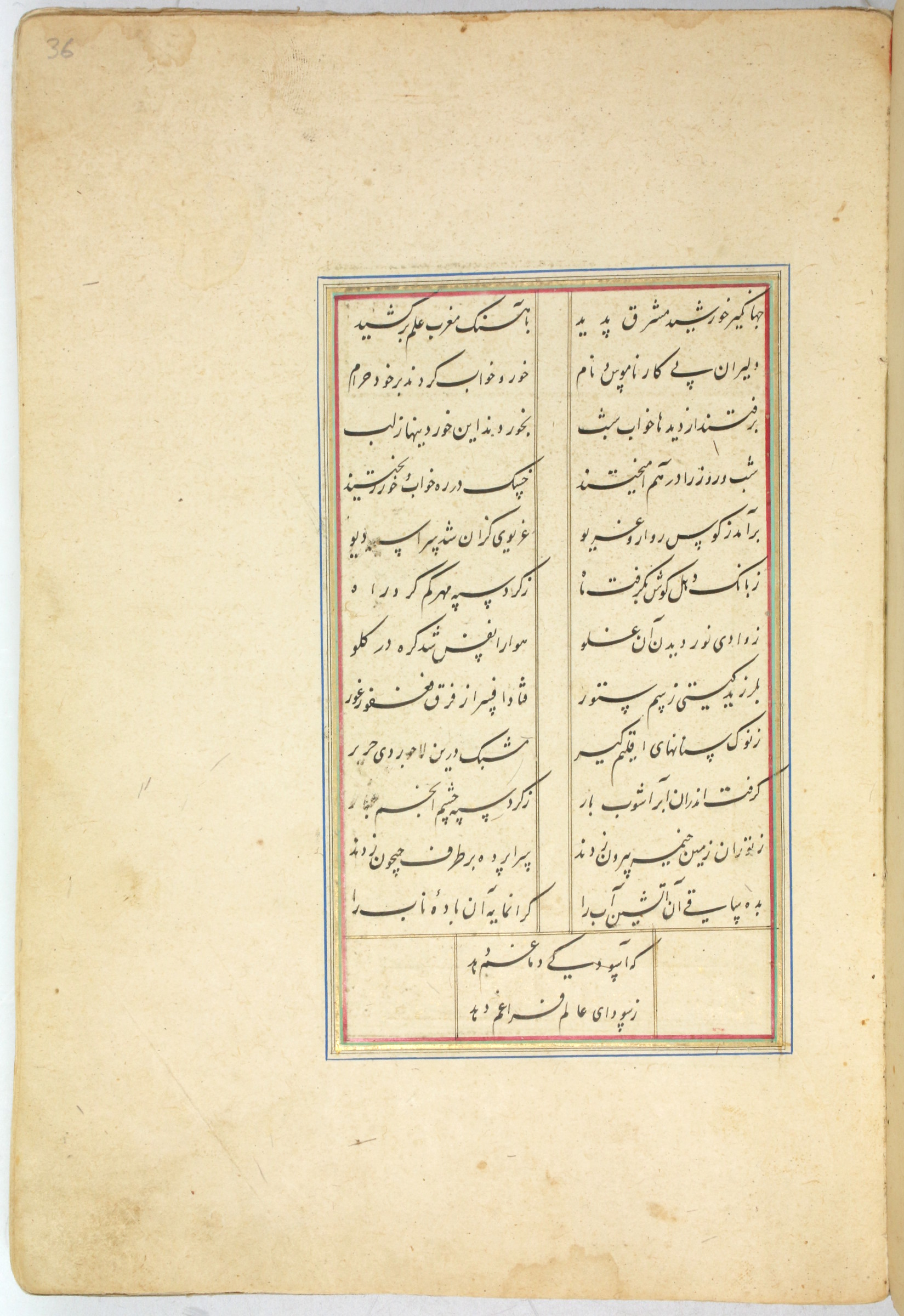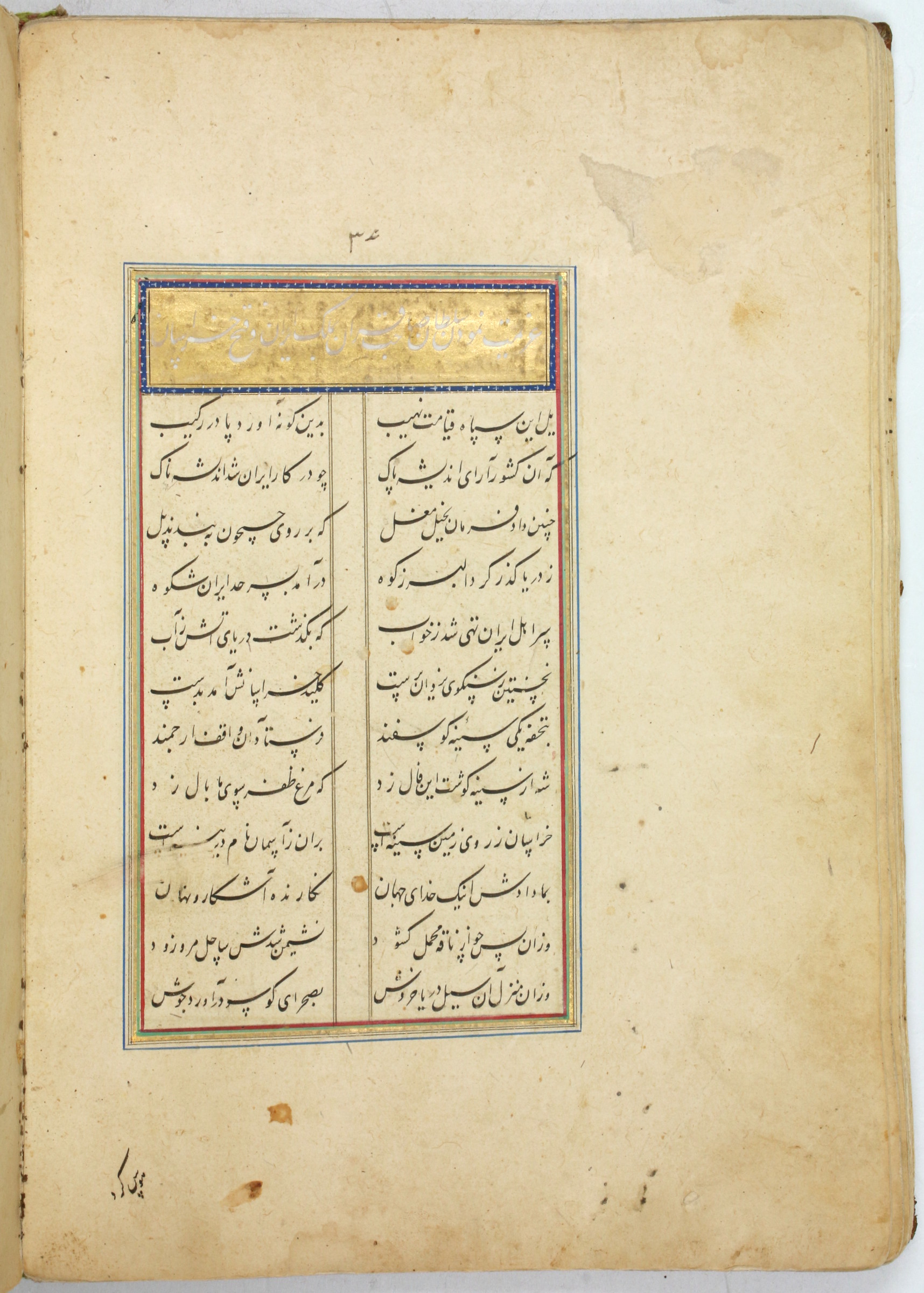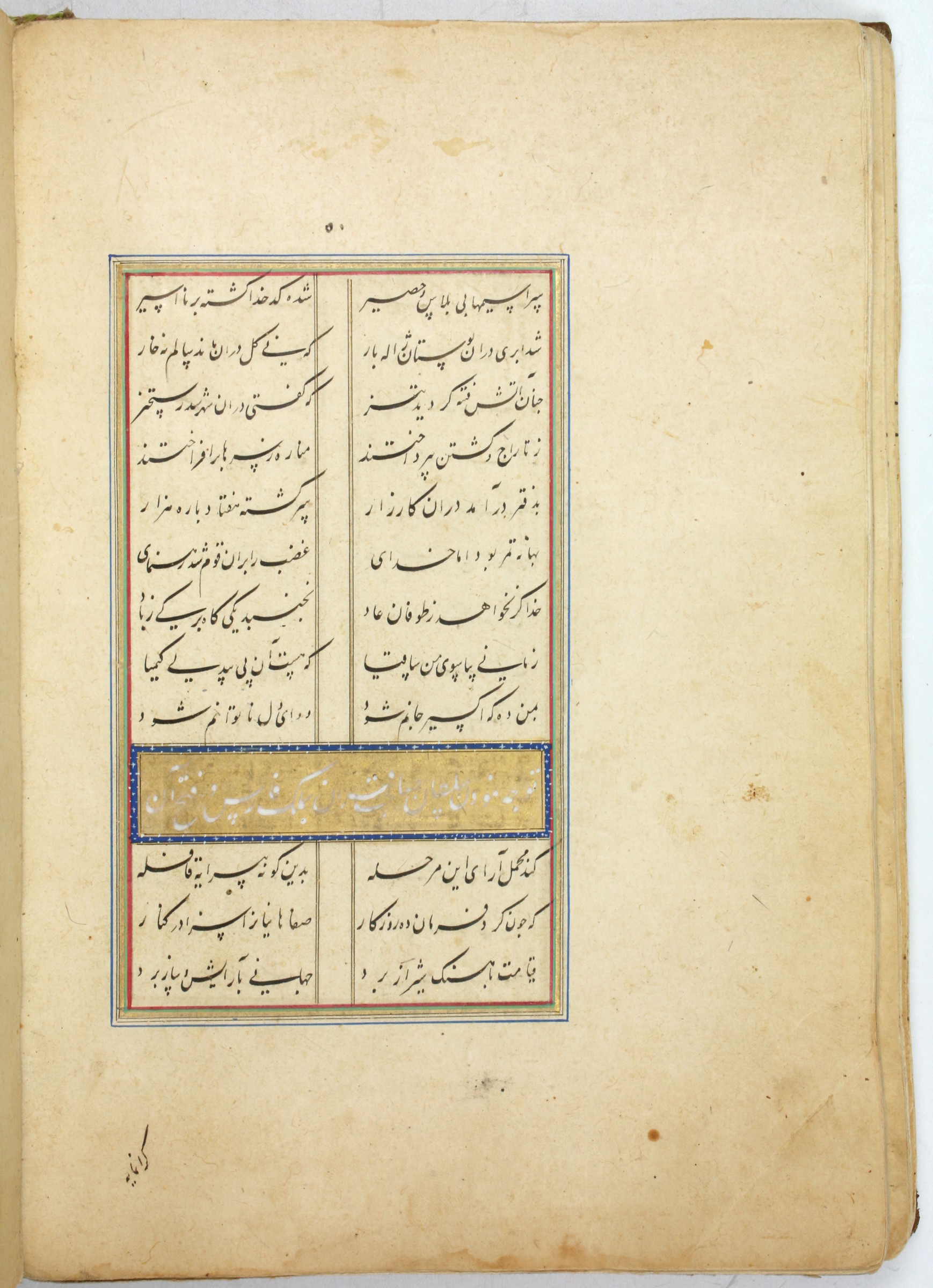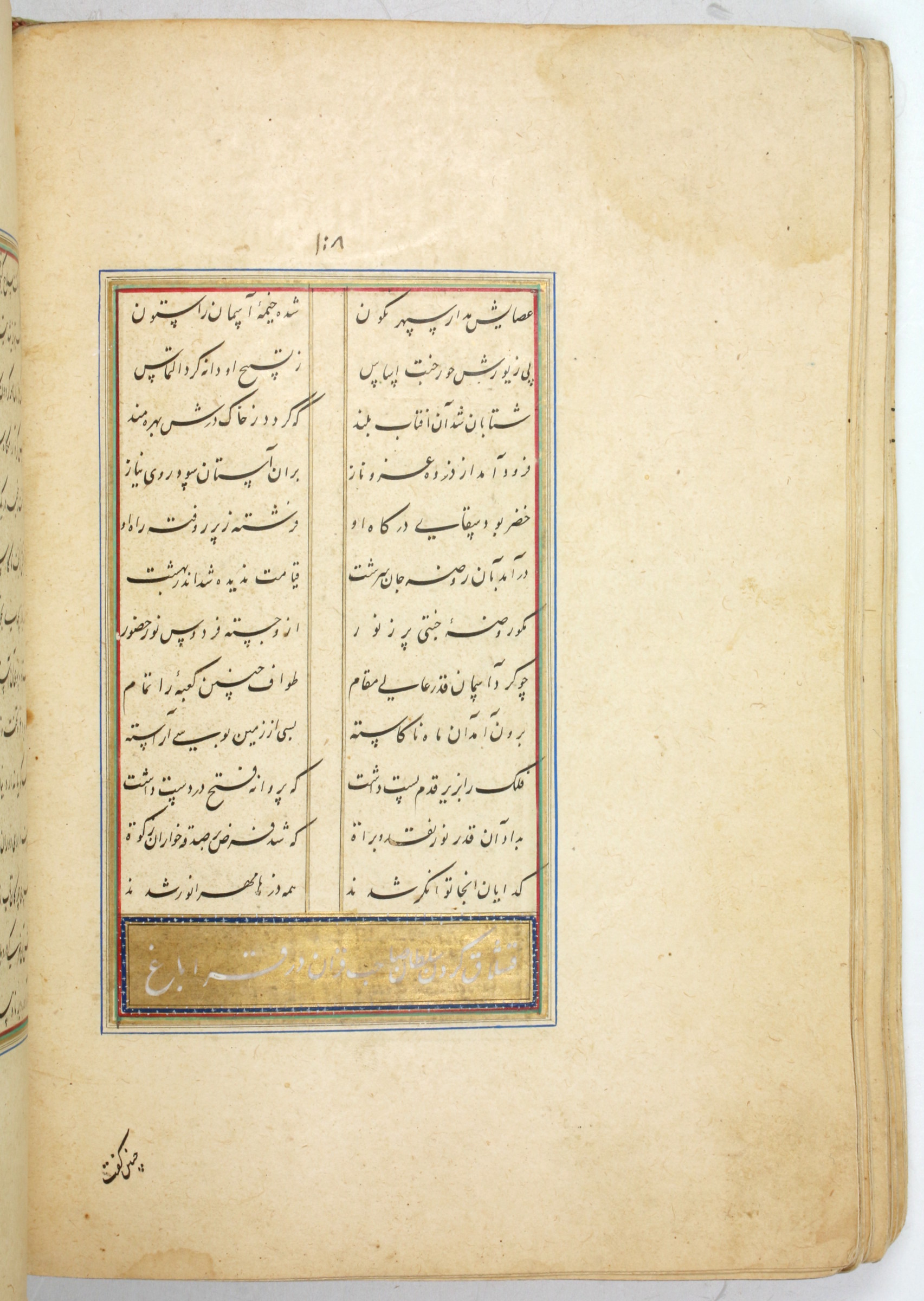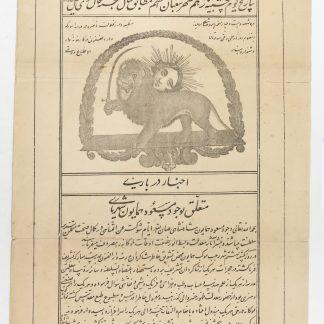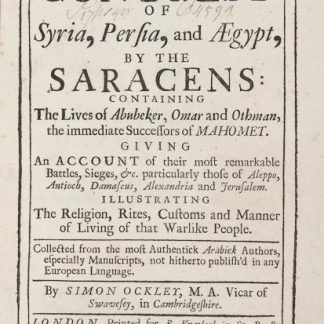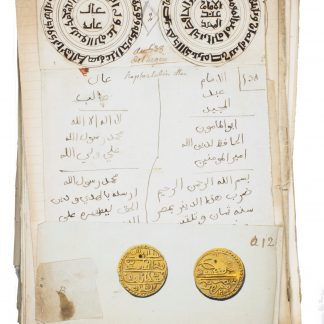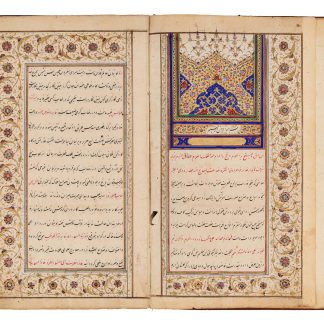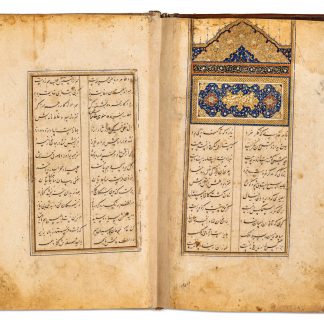The Life of Tamerlane
Timur-nama [The History of Timur].
4to (170 x 240 mm). Persian manuscript on polished paper. 137 (instead of 143) ff. (lacking ff. 97-102) in elegant black nasta'liq script, 14 lines, 2 columns. With an illuminated shamsa on fol. 1r (specifying the name of the sponsor Khawaja Nasir as well as the place and date of production) and an illuminated 'unwan headpiece on fol. 1v. Light brown full morocco with blindstamped borders, corners and central ornaments.
€ 85,000.00
An elegantly executed Eastern Persian manuscript that chronicles the epic life and victories of one of history's most famous emperors and military leaders, Timur Leng (Tamerlane), from his birth near Samarqand in modern-day Uzbekistan in 1336. "Certainly the most famous of Hatefi’s poems [... The work] extols Timur’s deeds in accordance with the main works of Timurid historiography such as Sharaf-al-Din Yazdi's Zafar-nama [...] Hatefi’s Timur-nama became a model for subsequent poems. It certainly introduced a new genre which was developed further by Hatefi himself [...] Written in 1498, the Timur-nama has been published twice in India (1869, 1958)" (Encyclopaedia Iranica XII, 55-57).
Abdallah Hatefi (Hatifi) was the nephew of 'Abd-al-Rahman Jami, one of the greatest Persian poets and composers of Sufi mystical works. The Timur-nama, modeled after Nizami's Iskandar-nama, appears to be his only completed work. The oldest extant copy was completed the year after Hatifi's death, 927 H (1521 CE), and was stored in the India Office Library.
Descended from the Mongol hordes of Genghis Khan, Timur participated in various military campaigns from a young age, and his victories quickly made him known as a highly skilled military leader. After a decade of internal political wrangling, he became ruler of the Timurid Empire in 1369. For the next 35 years, until his death in 1405, Timur continued to lead a number of great expeditions and wars; his conquests stretched as far west as Baghdad and the Black Sea, the shores of the Arabian Gulf, and far into modern Afghanistan and northwestern India; he took Herat, where this manuscript is written, in 1381. Timur began military campaigns against the Ottoman ruler Bayezid I and the Mamluks in Syria, as well as expeditions to Armenia and Georgia. His final campaign was in the winter of 1404, but he was stricken with fever and plague and died in February of the following year. His line continued through the glory of the Timurid period under his direct descendants, including Babur (1483-1531), the famous founder of the Mughal dynasty in India, who continued to rule until 1857.
A beautiful manuscript containing an illuminated headpiece of the greatest refinement; the illuminated border of the shamsah on fol. 1r. is a hallmark of Herati work. Surrounding the shamsa are several stamped waqf seals and various inscriptions by previous owners; fol. 140v has an inscription by Muhammad Taqi Qarakuzlu, dated 1237 H (1821 CE).
Provenance: Arts of the Islamic World, Sotheby's, 5 April 2006, lot 30. Sam Fogg, 2009.

